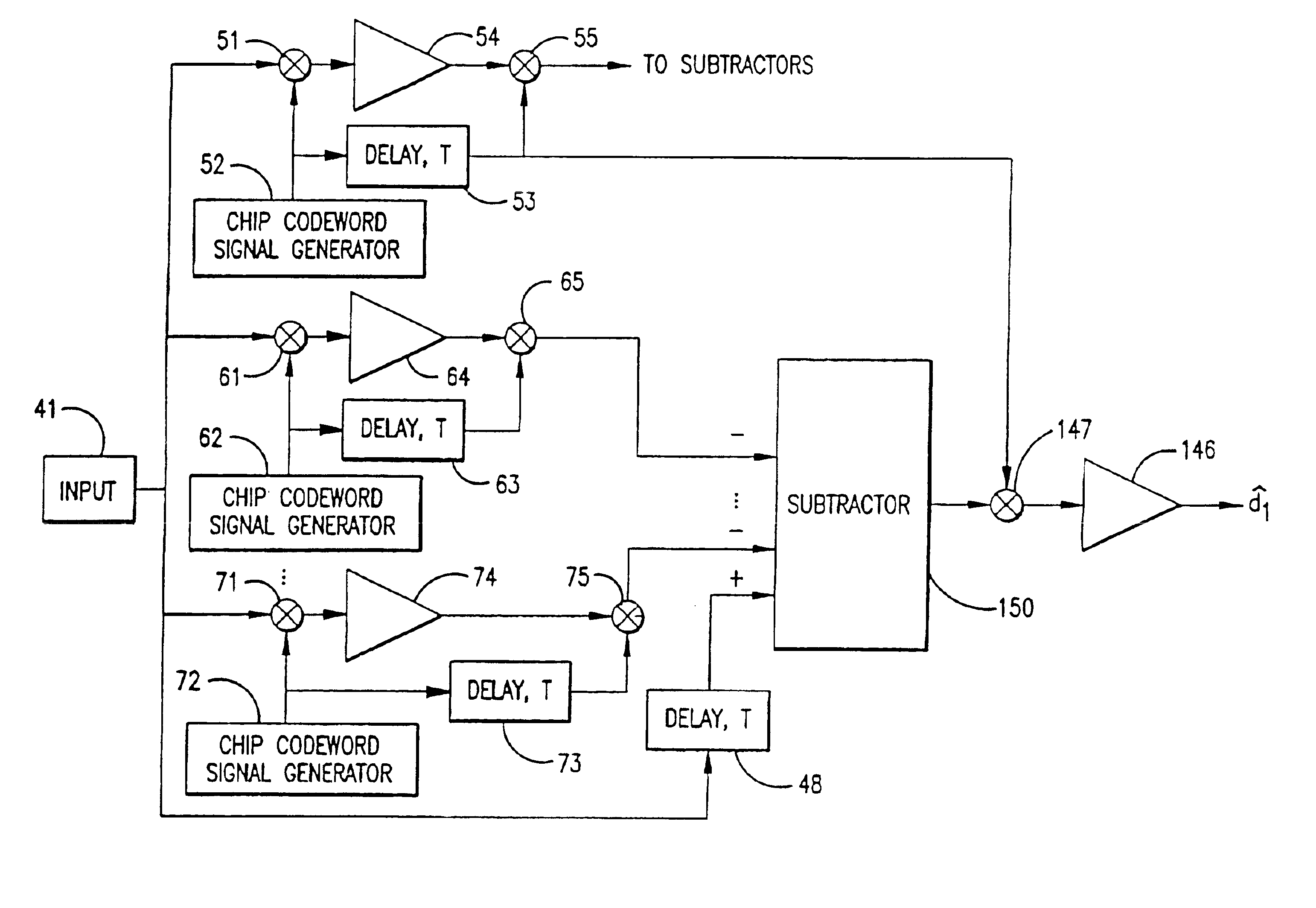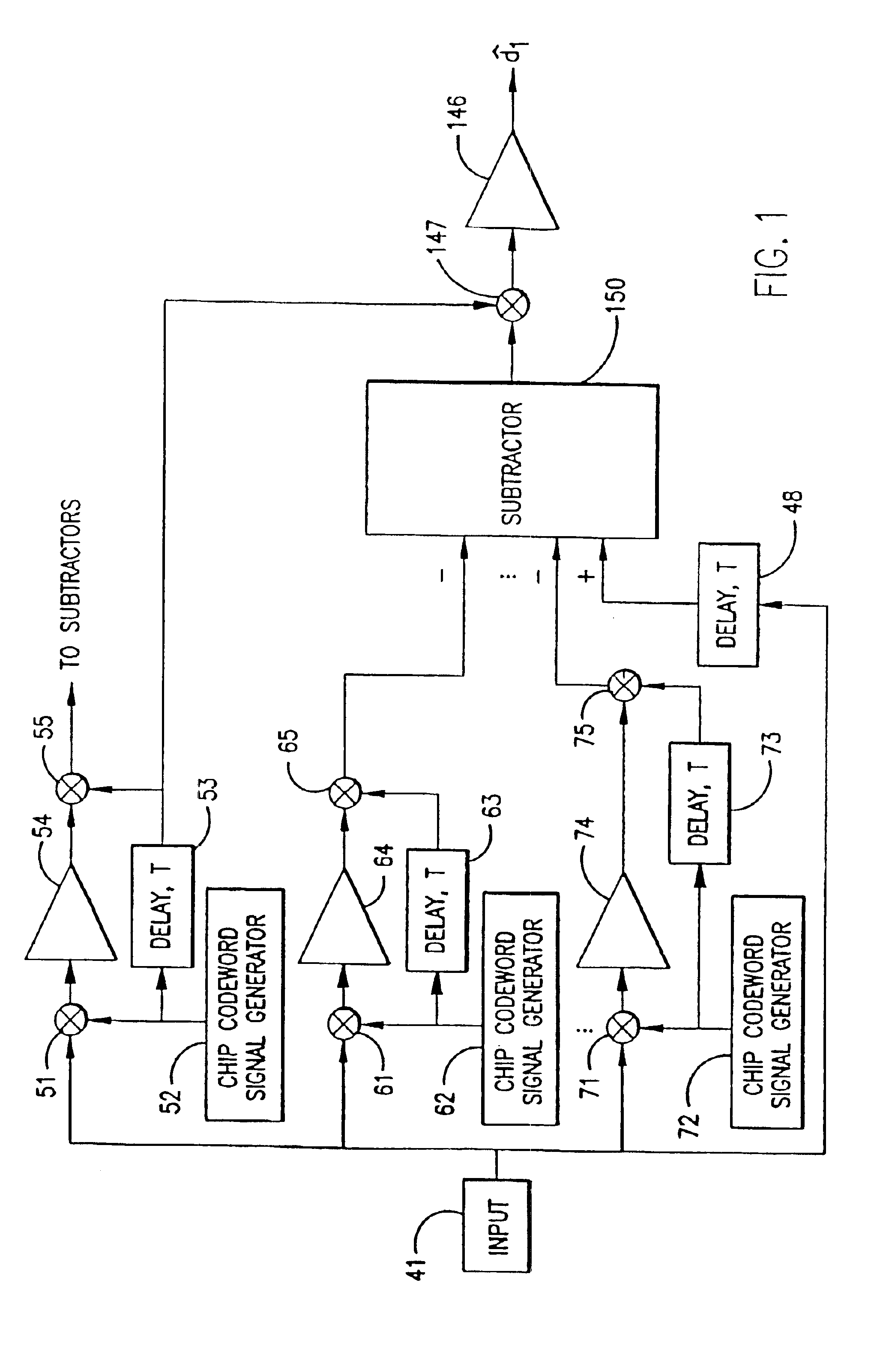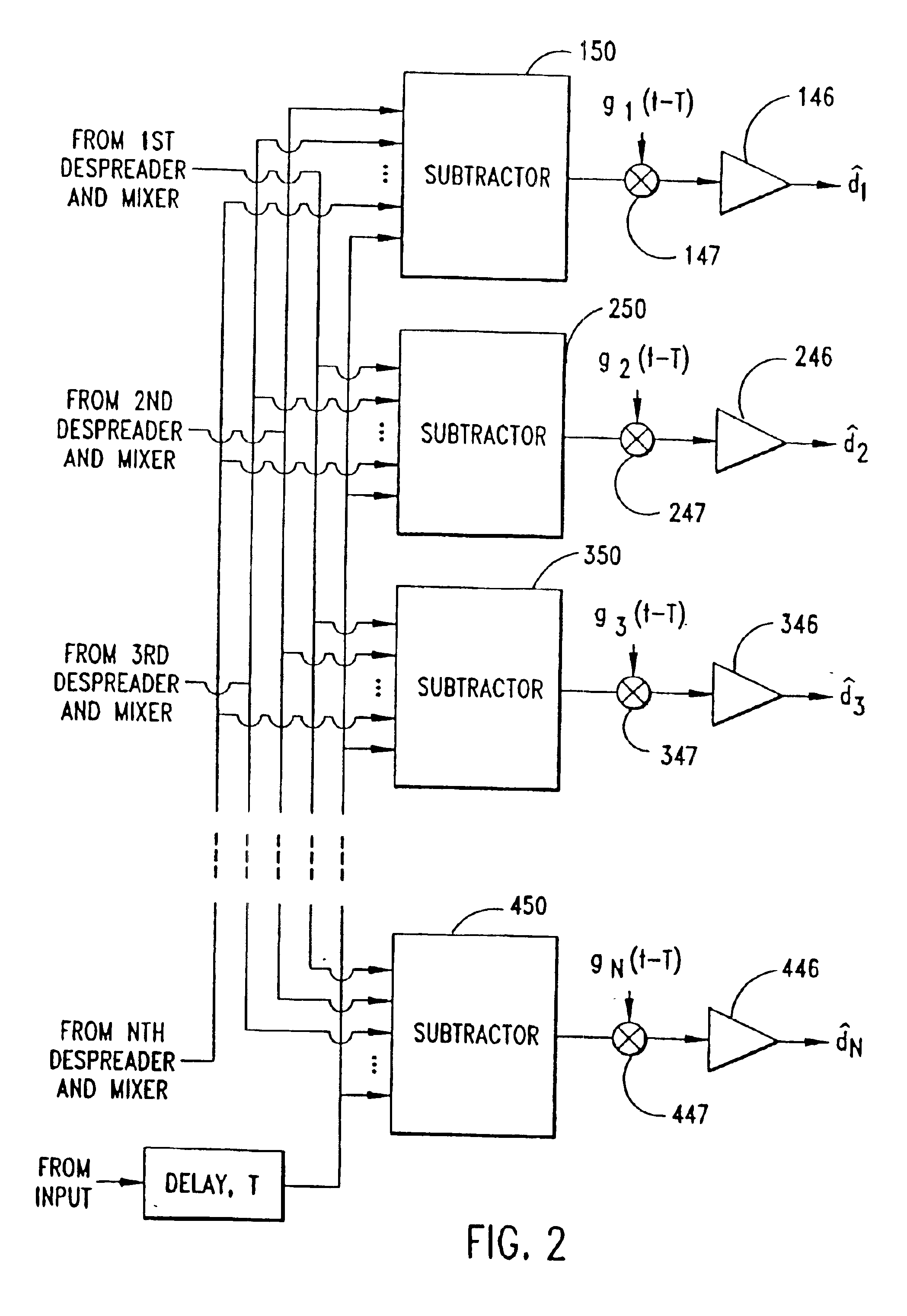Base station spread spectrum CDMA subtractive interference canceller
a subtractive interference and base station technology, applied in the field of spread spectrum communication, to achieve the effect of reducing nois
- Summary
- Abstract
- Description
- Claims
- Application Information
AI Technical Summary
Benefits of technology
Problems solved by technology
Method used
Image
Examples
Embodiment Construction
)
Reference now is made in detail to the present preferred embodiments of the invention, examples of which are illustrated in the accompanying drawings, wherein like reference numerals indicate like elements throughout the several views.
In the exemplary arrangement shown in FIG. 1, a spread-spectrum code division multiple access (CDMA) interference canceller is provided for reducing interference in a spread-spectrum CDMA receiver having N channels. The present invention also works on a spread-spectrum code division multiplexed (CDMA) system. Accordingly, without loss of generality, the term spread-spectrum CDMA signal, as used herein, includes spread-spectrum CDMA signals and spread-spectrum CDM signals. In a personal communications service, the interference canceller may be used at a base station or in a remote unit such as a handset.
FIG. 1 illustrates the interference canceller for the first channel, defined by the first chip-code signal. The interference canceller includes a plura...
PUM
 Login to View More
Login to View More Abstract
Description
Claims
Application Information
 Login to View More
Login to View More - R&D
- Intellectual Property
- Life Sciences
- Materials
- Tech Scout
- Unparalleled Data Quality
- Higher Quality Content
- 60% Fewer Hallucinations
Browse by: Latest US Patents, China's latest patents, Technical Efficacy Thesaurus, Application Domain, Technology Topic, Popular Technical Reports.
© 2025 PatSnap. All rights reserved.Legal|Privacy policy|Modern Slavery Act Transparency Statement|Sitemap|About US| Contact US: help@patsnap.com



